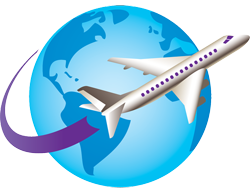The Malagasy people are thought to be descendants of Africans and Indonesians who settled on the island more than 2,000 years ago. Malagasy pay respect to their ancestors and spend a lot of effort on ancestral tombs. The tombs are opened from time to time, so the remains can be carried in procession before being rewrapped in fresh shrouds.
Earth Trip specialises in compiling a bespoke itinerary to match your tastes and preferences. Call us today to get expert advice on your holiday plans.
Madagascar is an island in the Indian Ocean, off the eastern coast of southern Africa, east of Mozambique. The capital, Antananarivo, is in the Hauts Plateaux (high plateau) near the centre of the island. The highest point is Maromokotro, in the Tsaratanana Massif region in the north of the island, at 2,876 metres (9,436 ft). It has a total area of 587,040 km 2 (226,660 sq mi), with 581,540 km 2 (224,530 sq mi) of land, 5,500 km 2 (2,100 sq mi) of water and 4,828 km of coastline. It is four times the size of England and roughly two and a half times the size of Great Britain.
Madagascar is the world’s fourth biggest island after Greenland, New Guinea and Borneo. Because of its isolated location, half its birds and most of its mammals and plants exist nowhere else on earth.

You can buy a 30, 60 or 90-day tourist visa on arrival at the airport. Details of current fees can be found on the Embassy of Madagascar website. Make sure an entry stamp is recorded in your passport. A tourist visa has a maximum validity of 3 months and isn’t extendable. All visitors must hold a passport valid for 6 months with at least 2 blank pages and a return flight booking confirmation.

Check the latest country-specific information and advice from the National Travel Health Network and Centre (NaTHNaC) on the TravelHealthPro website or from NHS (Scotland) on the fitfortravel website. Useful information and advice about healthcare abroad is also available on the NHS Choices website.
You can find further information and advice in the ‘Outbreaks’ section of the TravelHealthPro page for Madagascar.
There is a high risk of malaria in Madagascar: atovaquone/proguanil OR doxycycline OR mefloquine recommended.
Travellers should be up to date with routine vaccination courses and boosters as recommended in the UK. These vaccinations include for example measles-mumps-rubella (MMR) vaccine and diphtheria-tetanus-polio vaccine.
Make sure you have adequate travel health insurance and accessible funds to cover the cost of any medical treatment abroad and repatriation.
You should drink or use only boiled or bottled water and avoid ice in drinks.
If you need emergency medical assistance during your trip, dial 17 (117 from mobile phone) or +261 20 22 357 53 and ask for an ambulance. You should contact your insurance/medical assistance company promptly if you are referred to a medical facility for treatment.

September – November period is great for lemurs – babies are born at this time. Birds breed from September to December, while humpback whales arrive to Madagascar in late June until mid-September and whale sharks in October in Nosy Be. Antananarivo and highlands are much cooler than the rest of the island, therefore it is advised to not focus your holiday plans on weather in areas that are situated in high altitudes.
Firstly, please see the general weather summary for visiting Madagascar:
| Jan | Feb | Mar | Apr | May | Jun | Jul | Aug | Sep | Oct | Nov | Dec |
| – | – | – | ++ | +++ | ++ | ++ | ++ | +++ | +++ | +++ | ++ |
+++ the best time to visit
++ good time to visit
+ good time with some rain expected
– not a good time to visit (cyclone season)
During these months the island is experiencing the cyclone season in the central highlands and the north coast. Many hotels, lodges and national parks will be closed due to unpredictable weather, strong winds and lots of rain and mud. However, the south is fine at this time of year but you would need to skip all the rainforests if you like to visit during this time. In general, we would advise against travelling to Madagascar during this time.
Following the wet months, Madagascar is now lush and green. It is a great time of year to observe both reptiles and lemurs making great appearance all over the island. The temperature is very pleasant and makes an ideal condition. Visiting the north at the end of May marks the time for Nosy Be’s biggest cultural event of the year: The Donia Festival. It is a festival of culture where you can witness vibrant traditional dance and music. If you like beach time, you could visit the island of Saint Marie where in June you can spot the humpback whales.
This is a good time to try spotting humpback whales in Saint Marie Island (average temperature 24°C) and in Anakao (average temperature 27°C). The rainforests in July and August are buzzing with life, although some small species, such as dwarf lemurs and chameleons go into hibernation. Good conditions for snorkelling.
This is the best time to visit Madagascar for various reasons. It is a great time to observe native birds nesting in this birding paradise. Moreover, some lemurs are starting to give births to the young and this is an amazing opportunity to see them on the trees. September is still good for whales in many regions of the island. September brings warmer temperatures and a more peaceful atmosphere. Hibernating creatures also become active again thanks to a rise in temperature, so you really get the best of both worlds. This is also the peak of Madagascar’s bird breeding season. Many of the native birds have spectacular plumage and unique characteristics, and you may discover observing them is one of the highlights of your trip.
December can sometimes be the start of the rainy season but at the beginning of the month, rainfall should be at a minimum and lizards, snakes and chameleons are usually quite active during this time giving the best opportunity for photographers. Visit during this period for a combination of great weather and abundant wildlife. December is definitely the best time to visit Madagascar if you are hoping to hit the beach.
What to consider when planning to visit Madagascar?
The southwest, including Tulear and the Spiny Forest, is one of the hottest, driest regions. Summer temperatures can reach 40 °C

From Europe or Asia or North America, the best connections are with Kenya Airways, Ethiopian airlines or Turkish airlines.
Air Madagascar and Air France or Corsair fly from Paris to Antananarivo.
Air Austral (French) runs flights to Madagascar from Paris with a transfer on Reunion Island.
Travellers from Europe and Asia can also fly with Air Mauritius
Flights from Johannesburg, South Africa, using Air Madagascar code shared with SA Airlink.
Thoughtful thoughts to your inbox